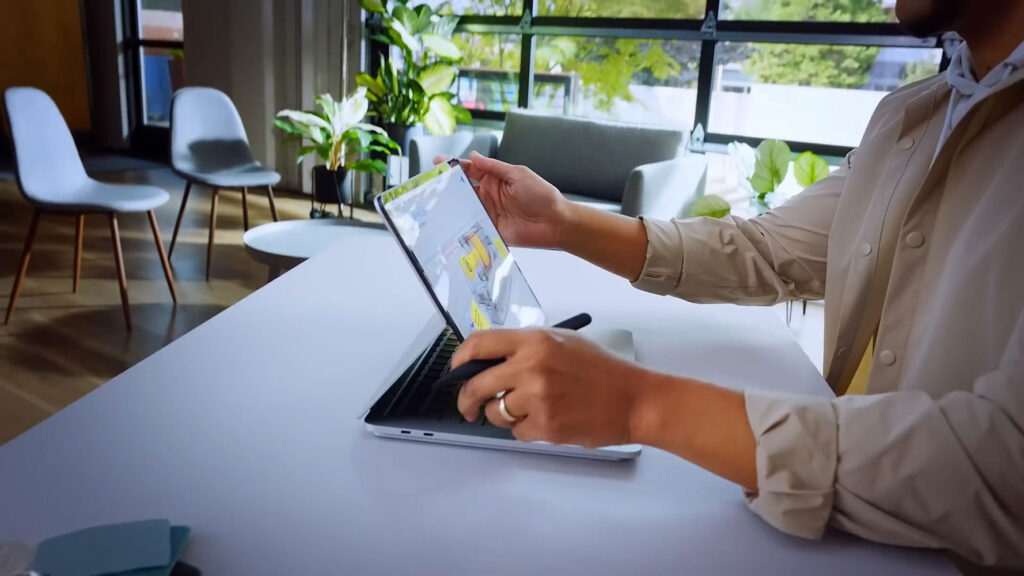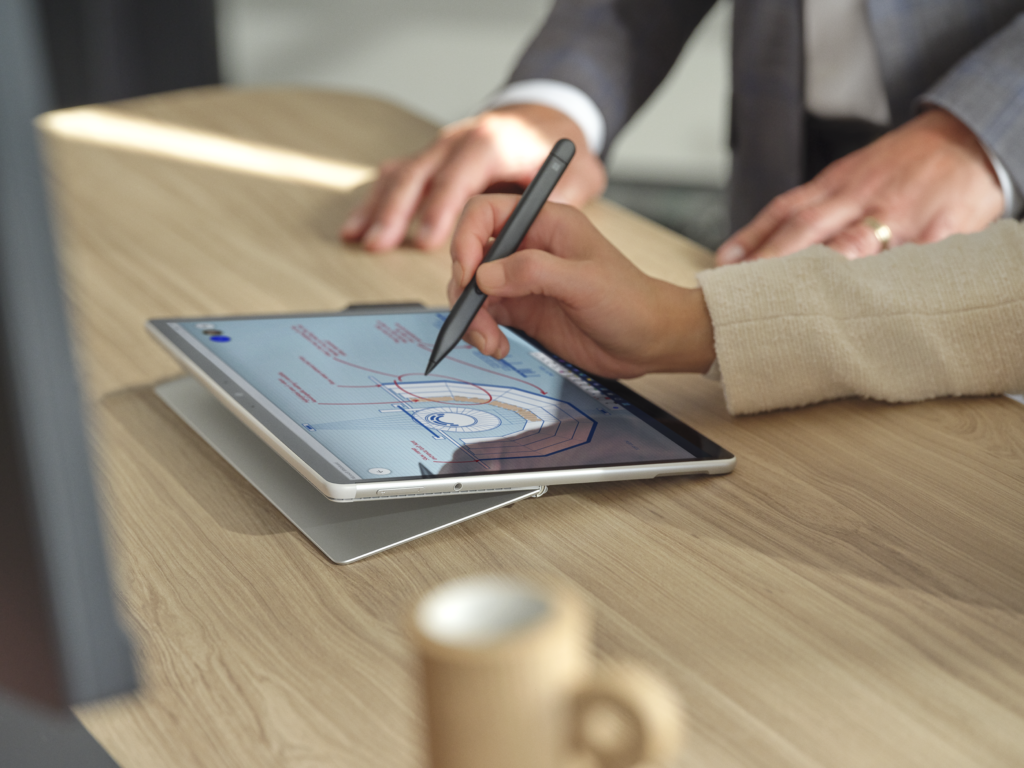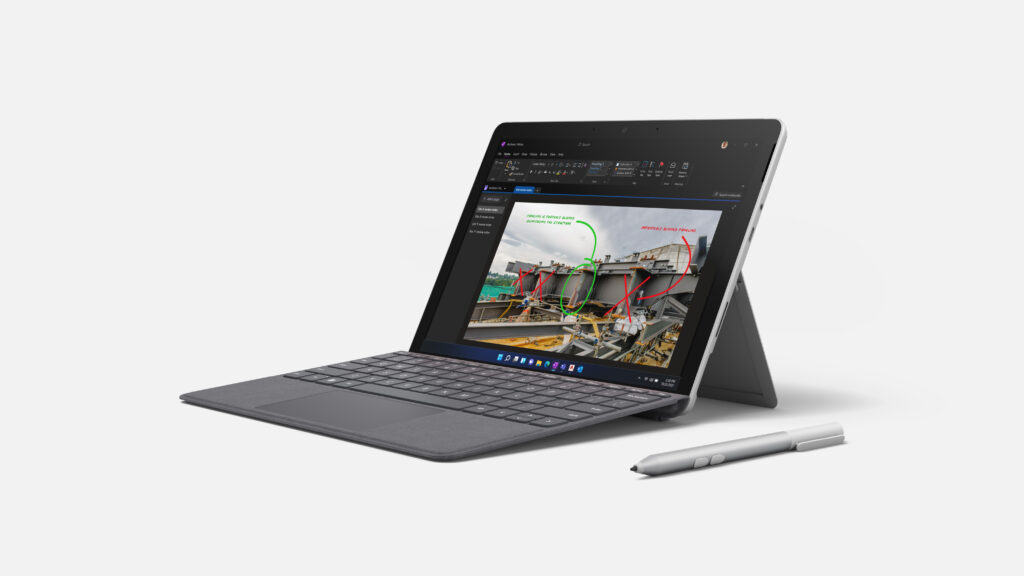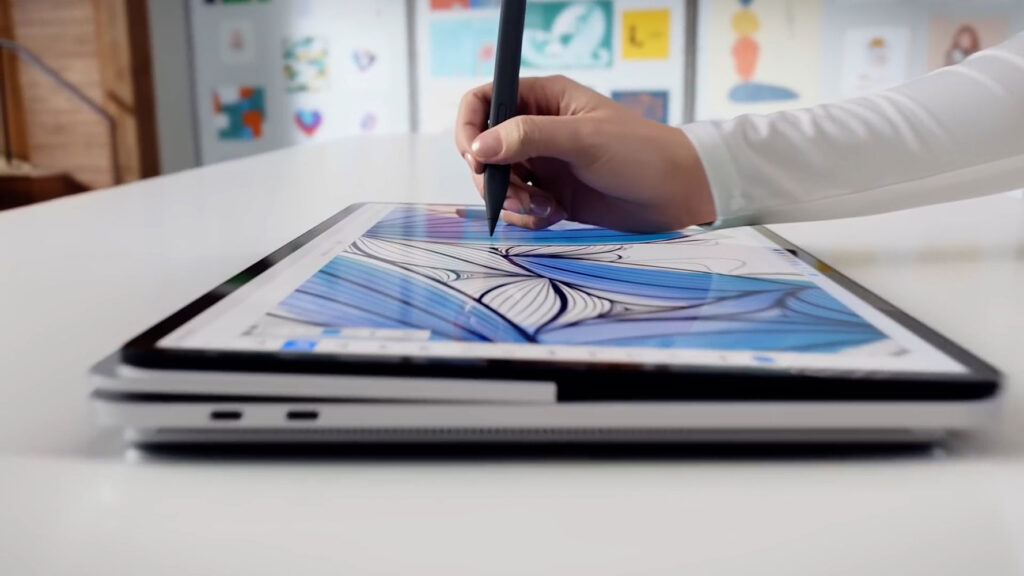![]()
In our mini-series, “The Science Behind the Surface Pen”, we’ve considered just a few of the studies that probe the differences between writing and typing. True, the keyboard is one of the most used input methods. But here’s why you need a device with a digital pen.
Let’s be perfectly clear, a pen and a keyboard are both very important on your computer. As is voice, touch, camera and any other input method. But pressing buttons on a keyboard is a simple mechanical process.
Why you need a device with a digital pen
Writing and drawing with a pen involves spatial planning, fine motor skills, vision, and a whole host of sensory and physical coordination activities. And all of that adds up to deeper processing.
When notetaking in classes, lectures, at meetings and at conferences, using a pen leads to better outcomes, such as:
- The ability to remember more – even without the need for revision
- More processing and understanding
- Maintaining better focus and attention.
The studies highlight a number of reasons for this.
Why should you use a pen for note taking?

Firstly, you tend to take less verbatim notes with a pen. Since you probably can’t keep up with the speaker, you are forced to process and summarise when taking notes in long hand.
Secondly, because writing involves much more sensory input and motor activity more of the brain is active. When you write, you are automatically planning each sentence, word and the space of each letter. With a pen you move your fingers, hand, arm and body to form characters. All the while you are visually monitoring and signposting as you go. This puts your brain into its optimal learning mode. Hence, enhancing your memory and processing.
Thirdly, your focus is sharper. With so much of your brain and body in gear and switched on, you naturally find that you’re less likely to doze off or daydream.
Using a pen is best for problem solving
Using a pen is also best for problem solving, generating ideas, creating things and collaborating with others. Why?

Firstly, using a pen produces low formality input. Your writing might be messy, but that’s actually the point! With handwriting, nobody expects it to be perfect. No one expects a finished product. It’s just an idea. And that’s even true of your own perception. When you write, you’re not likely to be worried about spelling and grammar. When you type, you spend a lot of time correcting mistakes, rewording things and focusing on format. These things are important. Just later in the process.
Secondly, with a pen you work in a visual space. Visual and spatial processing is better for ideas. They don’t call it big “word” thinking. No. It’s called “big picture” thinking. And for very good reason.
Thirdly, a pen trains your focus. Just like note taking, working on problems and ideas with a pen stimulates activity across wider regions of the brain. A pen puts more grey matter to work.
Why should you deliver presentations with a digital pen?
Presenting is also better with a pen. Why? For three key reasons.

Firstly, your audience listens to you. If you present with graphics, text and pictures only, people read and focus on your slides. They don’t listen to you. But if you develop ideas with your pen, your audience will listen to you. It also gives people time to take their own notes.
Secondly, your audience follows along. Because they are able to take their own notes, they stay awake and pay attention.
Thirdly, your presentation can incorporate feedback. This enables you to adapt your presentation take a different direction when it is relevant to the audience.
Research suggests that your brain mirrors activity that you observe. So presenting with a pen generates similar sensory-motor brain activity in the audience. So it’s likely that just seeing a presentation given with pen leads to better memory and processing, even without taking notes.
You’ve heard of “Death by PowerPoint?” Well using a pen in your PowerPoint presentation is literally the opposite! It’s life by PowerPoint!
How is a digital pen better than a physical pen?
There are several reasons that a digital pen is even better than a physical pen for all of these tasks:
![]()

It’s a much more visual medium.
- You can switch colour and style in an instant. It’s like having one of those huge multicolour pens. Only better!
- You can combine your writing and drawing with digital images and documents.
- You have unlimited space – so you never run into arbitrary edges and borders.
- You can cut and paste without scissors or glue.
- You can instantly erase without fuss.
You’re using digital storage.
- You never run out of space.
- You can search through your handwritten notes.
- You can convert notes to text instantly.
- You can share or send a copy instantly
You can collaborate without boundaries.
- You don’t have to be in the same room to share the space.
- You can collaborate with people who would not have been included in the past. That’s the beauty of not relying on physical pens and paper!
What about physical pen and paper?
Professors Oviatt, Van Der Meer, Van Der Weel and Sanson all conducted their research with digital pen and paper. The studies that we have discussed clearly show that the benefits are not locked in the pen and paper itself, but the physiological and neurological activities that go with them. Therefore they can be leveraged in the digital world.
I know many people get nostalgic about pen and paper, and that has it’s place. But Word Processing and Email have made it possible to do things that seemed impossible 35 years ago. Additionally, we now have digital technologies like the cloud, video conferencing and modern devices. These tools have made work far more efficient, creative, fulfilling and global than ever before.
How can you get started with a digital pen?

The research shows that using a pen on your computer leads to better memory, deeper thinking, problem solving, creativity, collaboration, ideation and presentations. The question is, how do we get started?
As we’ve seen through the research, the act of typing on a keyboard is a simple mechanical process that easily transferred from typewriters to computers. It still took a few decades to become mainstream. Transferring from pen and paper is less simple. But still possible and with a far greater upside. However, the upside is not efficiency. It’s far more than that. It’s possibility.
The next installment of this mini series will deal with notetaking in meetings and classes. It will touch on developing ideas personally. As well as problem solving and ideating with a group. Lastly, we will discuss presenting with digital ink.
We’re going to look at how you can put the science into practise with a digital pen. So don’t forget to subscribe to our ASI Youtube channel for the latest.